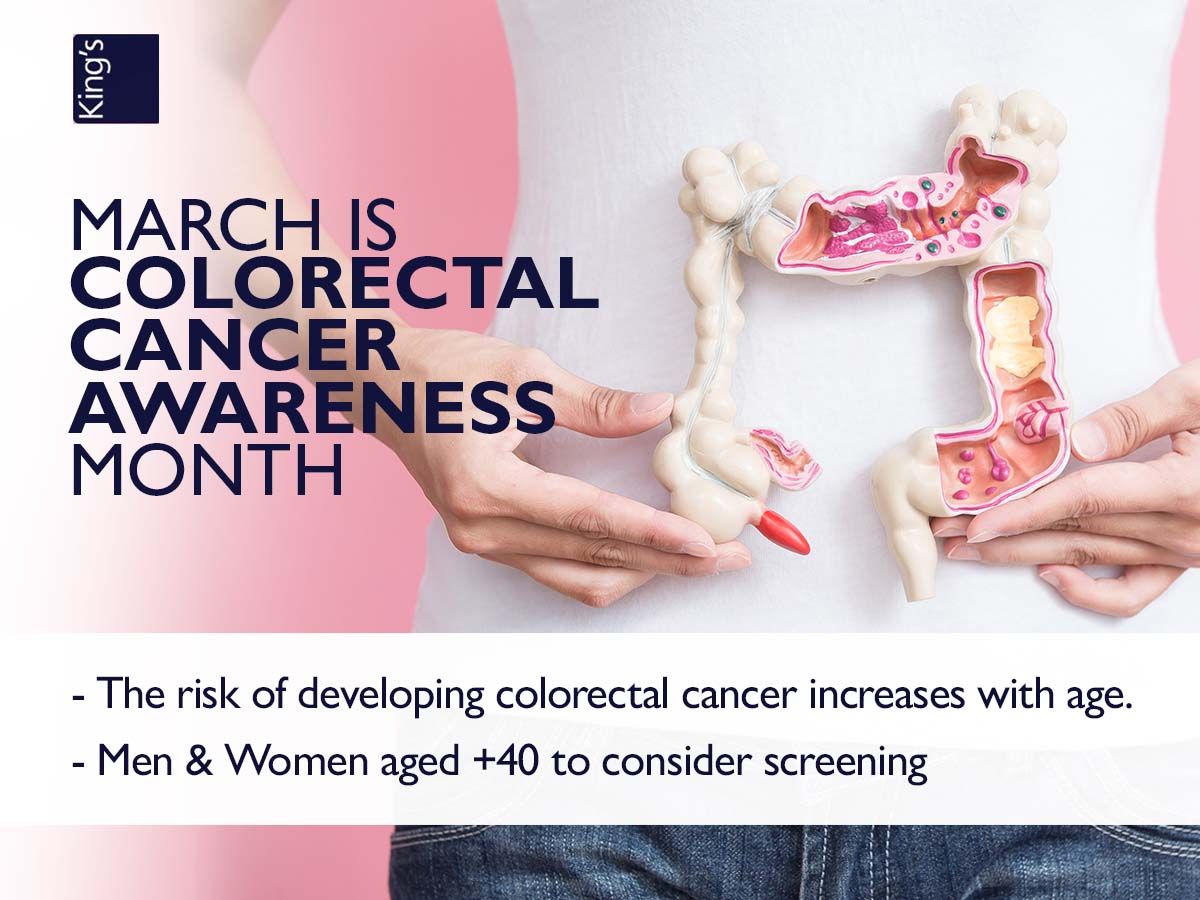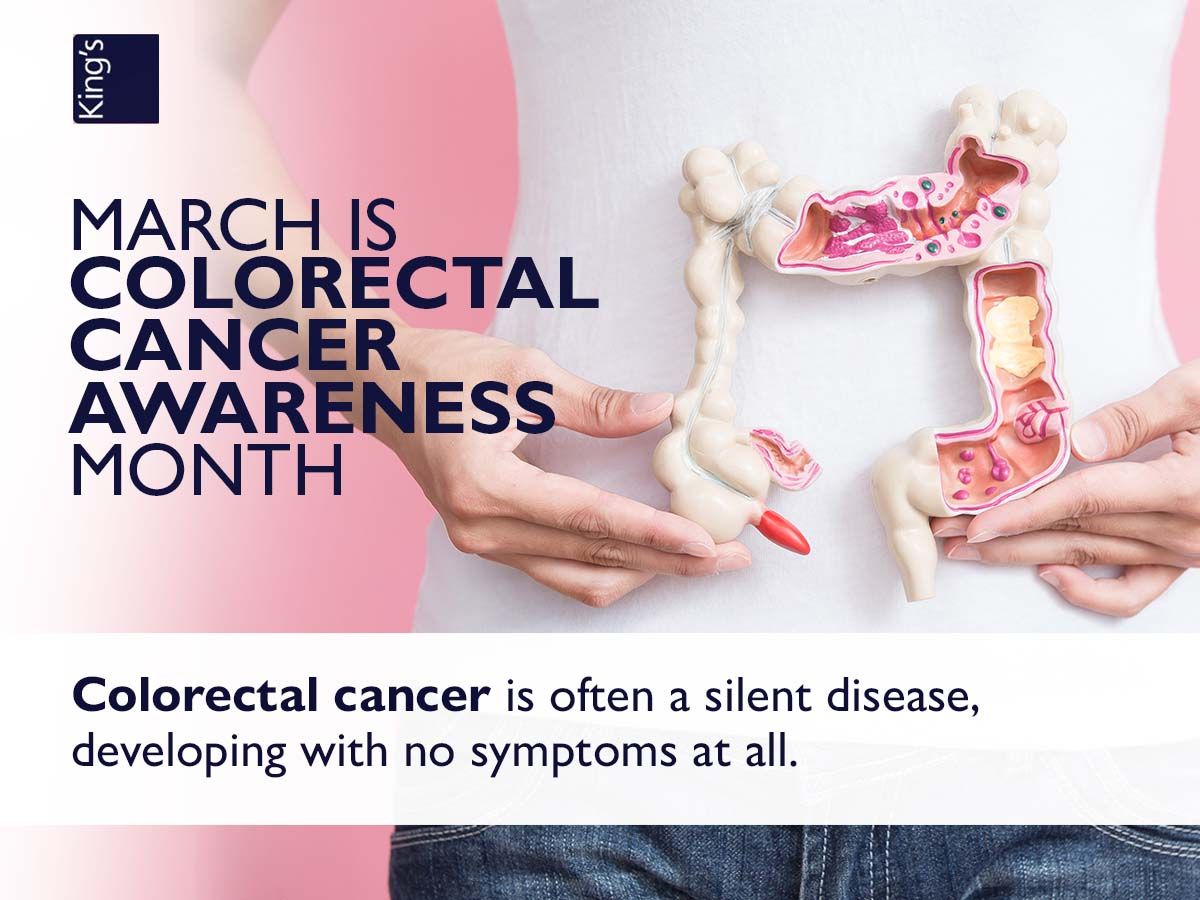The colon and rectum together make up the large intestine. The rectum is the last portion of it and ends in the anus, where the remainder of food and intestinal cells the body disposes of naturally are passed out.
Normal human cells grow, divide and organise in an orderly way. Cells die and are replaced by new cells continuously.
A tumour develops when cells in the body begin to divide and change without order or control.
Colorectal cancers almost always start as benign growths called polyps, in the wall of the colon. These polyps then continue to grow, and undergo further genetic changes, until in the end, they turn into cancer.
This process takes more than 10 years.
Risks

Colon cancer is the second-most common cancer in the UAE, similar to the rest of world’s population.
Colorectal cancer is more common in people over age 50 and the risk of developing the disease increases with age. A diagnosis of colorectal cancer is more likely if you:
Have polyps inside the colon and rectum
Have a personal or family history of polyps or colorectal cancer
Have a personal history of ulcerative colitis or Crohn's disease
Consume a high-fat, low-fibre diet
Are not physically active
Smoke, consume heavy amounts of alcohol
Symptoms

Generally, someone with benign colonic polyps or early-stage colorectal cancer will not have any symptoms. Blood in stool and changes in bowel are symptoms that generally only occur at a later stage.
Preventing colorectal cancer
Many colorectal cancers are preventable through early detection of polyps and lifestyle changes. Unless you have other risk factors, such as a family history of polyps or colorectal cancer, regular screenings for polyps should begin at the age of 45. Other preventive measures include:
Eating a diet low in fat (especially animal fat) and high in fibre
Staying physically active and maintaining a healthy weight
Not smoking
Limiting alcohol consumption
Screening
Screening means check persons without any symptoms for diseases. In the case of colonic cancer, it means checking for polyps or cancer. In contrast, persons with symptoms like blood in stool or changes in bowel habits need a diagnostic examination, in general, a colonoscopy.
Unlike other cancers, the window of opportunity for finding the precancerous, still benign lesions is long - many years in which we can examine healthy persons and find and remove the precancerous polyps - or detect cancer in an early, curable stage.
Once a person starts screening in the recommended intervals, the risk of colonic cancer is reduced by more than 60 per cent.
How is screening done?
Colonoscopy
Colonoscopy remains the gold standard for colorectal cancer screening. Colonoscopy helps detect the polyps that are predecessors of colon cancer. Finding and removing these polyps prevents the development of colorectal cancers in nearly all cases. If cancer is already present, colonoscopy can help find it early enough for successful treatment.
King’s College gastroenterologists and colorectal surgeons perform a high number state-of-the-art colonoscopies according to international guidelines and adhering to strictest quality control measures on a daily basis.

If a screening colonoscopy is normal and in the absence of specific risk factors, the next colonoscopy is recommended after 10 years.
For a colonoscopy, the colon needs to be flushed with a laxative the day before the procedure. The procedure itself takes about 20 minutes. Most persons choose a sedation for the procedure - they get a sedative administered by an anaesthetist. It is not a general anaesthesia, but a deep and comfortable sleep. During this time, the colonoscope - a flexible tube with a camera – is inserted and navigated through the colon. There is no pain or discomfort after the procedure. The result will immediately be explained by the performing physician.
FIT test
As polyps or colorectal tumours grow, they sometimes bleed into the intestine. Benign conditions like haemorrhoids can also cause blood in the stool. This blood is not visible.
The FIT is a test that detects trace amounts of blood in the stool.
A stool sample, collected at home, is all what is needed for this test, which is highly accurate for detecting blood of any source. The test kits are simple and easy to use at home, and they include detailed instructions.

FIT tests are economic and very easy to use.
This test is recommended once yearly.
If a FIT test is positive, meaning it shows traces of blood, a colonoscopy needs to be performed to find the source.
FIT tests are widely available, can be requested from the family physician or can be purchased with instructions how to use them even without seeing a physician.
Flexible sigmoidoscopy
A sigmoidoscopy is a partial colonoscopy. The cleaning of the last part of the colon can be done immediately prior the procedure and can be tolerated without sedation. It is recommended every 3 years in conjunction with the FIT test.
During the procedure, which takes five to 10 minutes, the examined person will lie on their side. Physician will insert and guide the sigmoidoscope into the rectum and lower colon to examine the lining for polyps or signs of cancer.
Diagnosis
If screening tests show polyps or other abnormal areas, these areas will be biopsied: a tissue sample will be taken.
This is a safe procedure, done during the colonoscopy, and pain free.
If there is a polyp, the whole polyp will be removed.
The writer is Consultant Gastroenterology at King’s College Hospital London Dubai
To learn more about King's College Hospital London Dubai's colorectal cancer screening programme, click here




